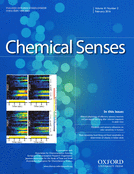
“Sepsis is a life-threatening condition with high mortality rates that is caused by dysregulation of the host response to infection. We previously showed that treatment with the cannabinoid CB1 receptor antagonist rimonabant reduced mortality rates in animals with sepsis that was induced by cecal ligation and puncture (CLP). This improvement in the survival rate appeared to be related to an increase in arginine vasopressin (AVP) levels 12 h after CLP.
The present study investigated the effects of rimonabant on organ dysfunction, hematologic parameters, and vascular reactivity in male Wistar rats with sepsis induced by CLP. Intraperitoneal treatment with rimonabant (10 mg/kg, 4 h after CLP) abolished the increase in the plasma levels of lactate, lactate dehydrogenase, glucose, and creatinine kinase MB without altering hematological parameters (i.e., leukopenia and a reduction of platelet counts). CLP increased plasma levels of nitrate/nitrite (NOx) and induced vasoconstriction in the tail artery. The treatment of CLP rats with rimonabant did not alter NOx production but reduced the vasoconstriction. Rimonabant also attenuated the hyperreactivity to AVP induced by CLP without affecting hyporesponsiveness to phenylephrine in aortic rings.
These results suggest that rimonabant reduces organ dysfunction during sepsis, and this effect may be related to AVP signaling in blood vessels. This effect may have contributed to the higher survival rate in rimonabant-treated septic animals.”








